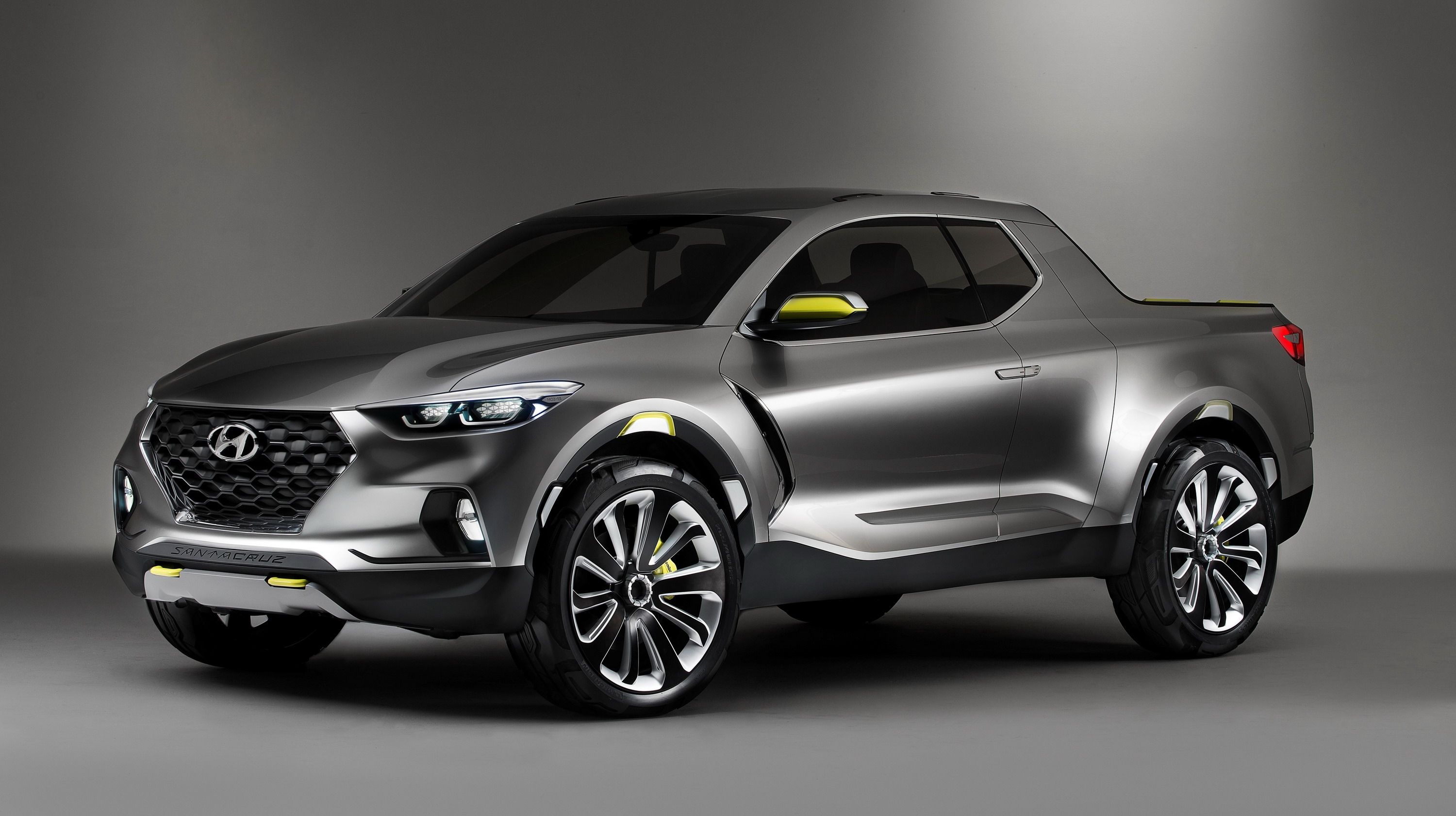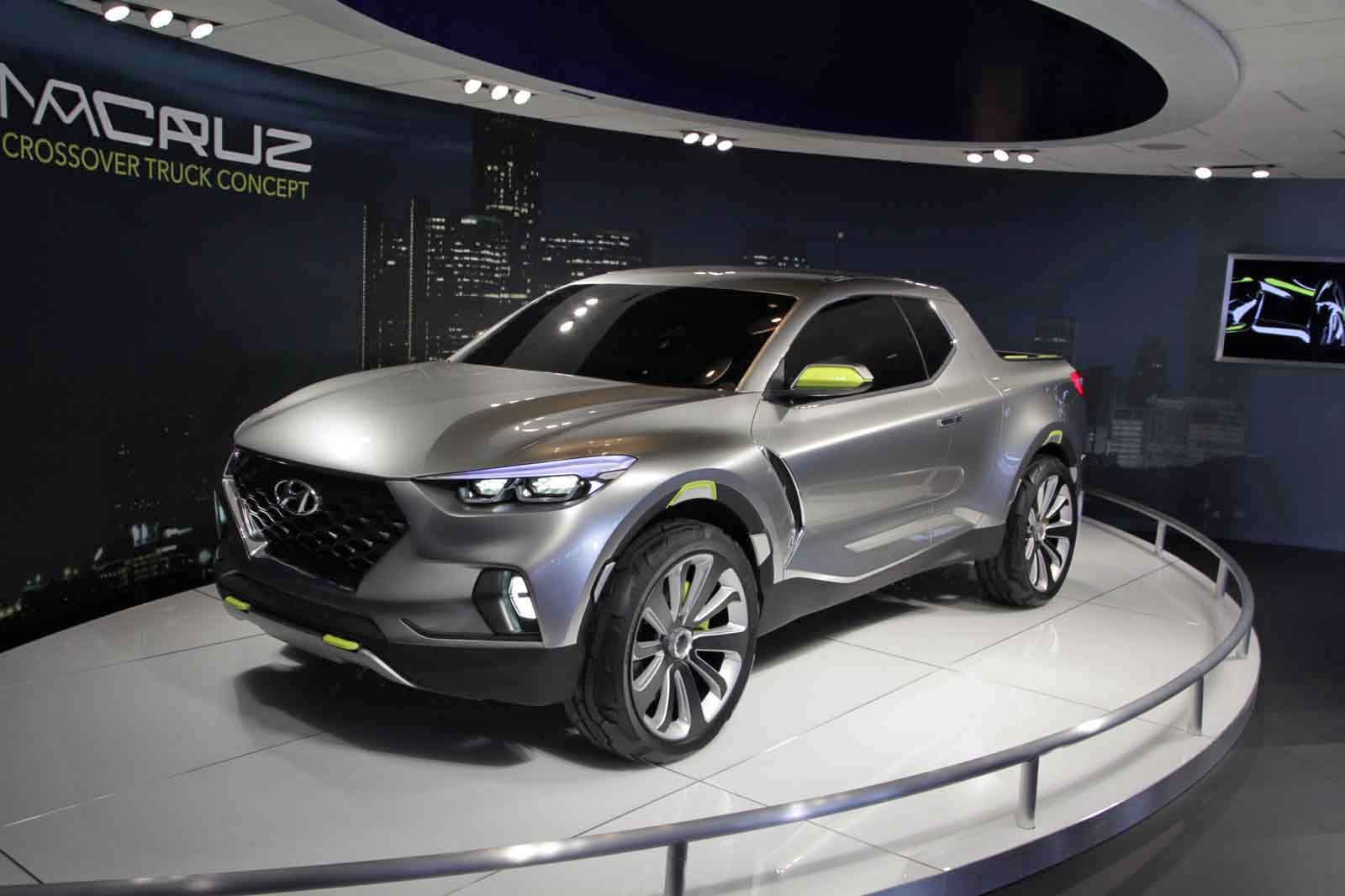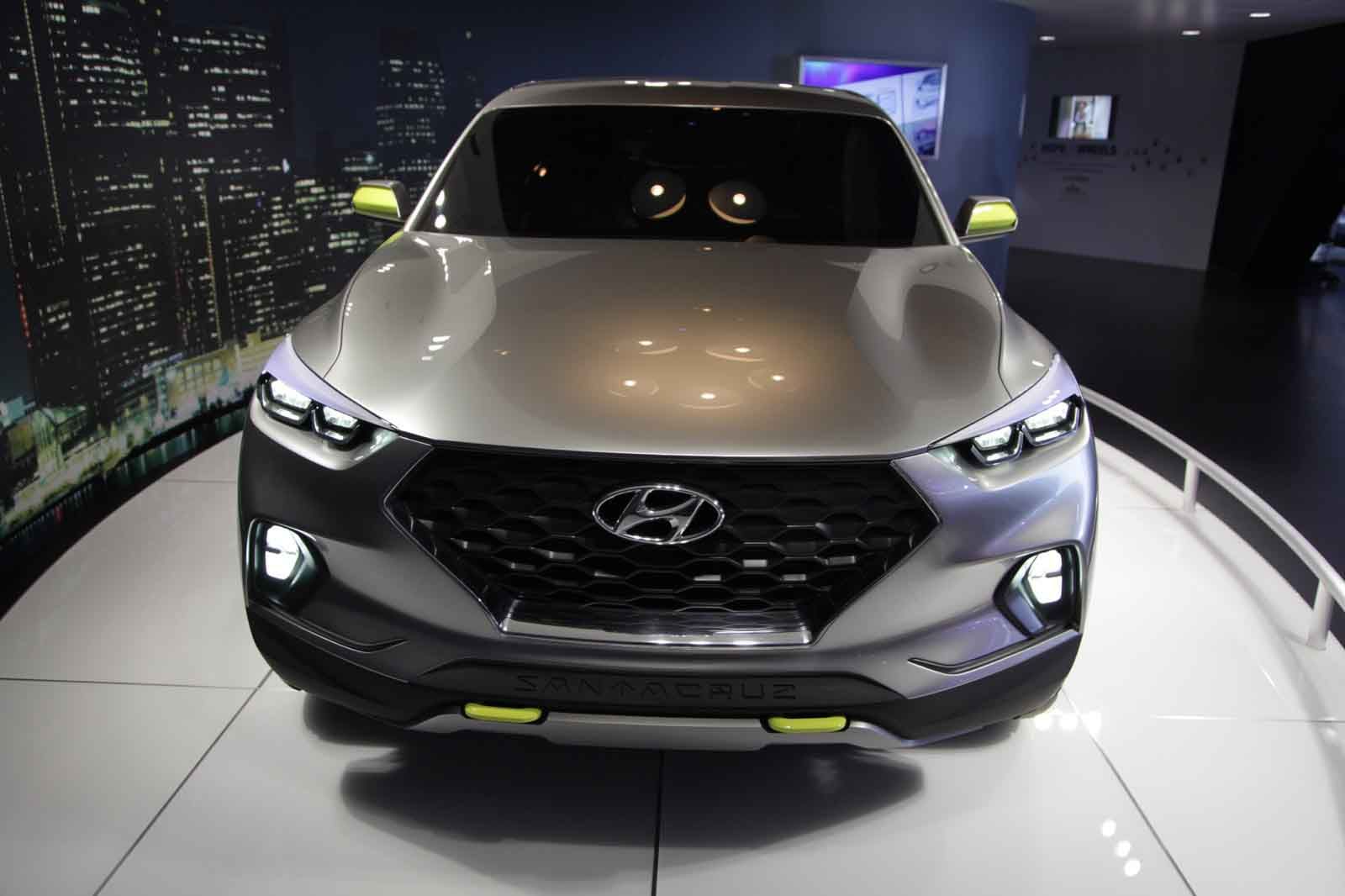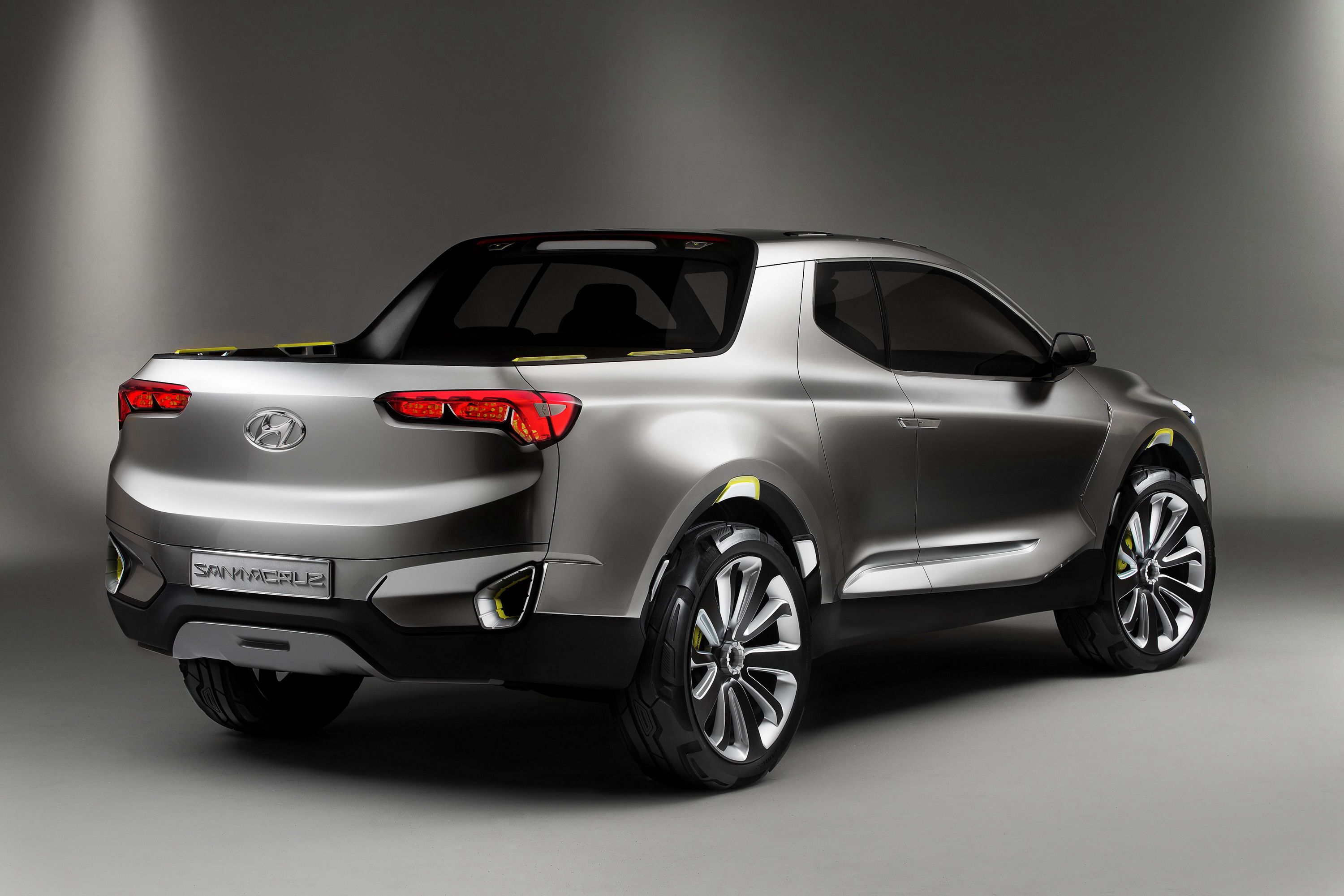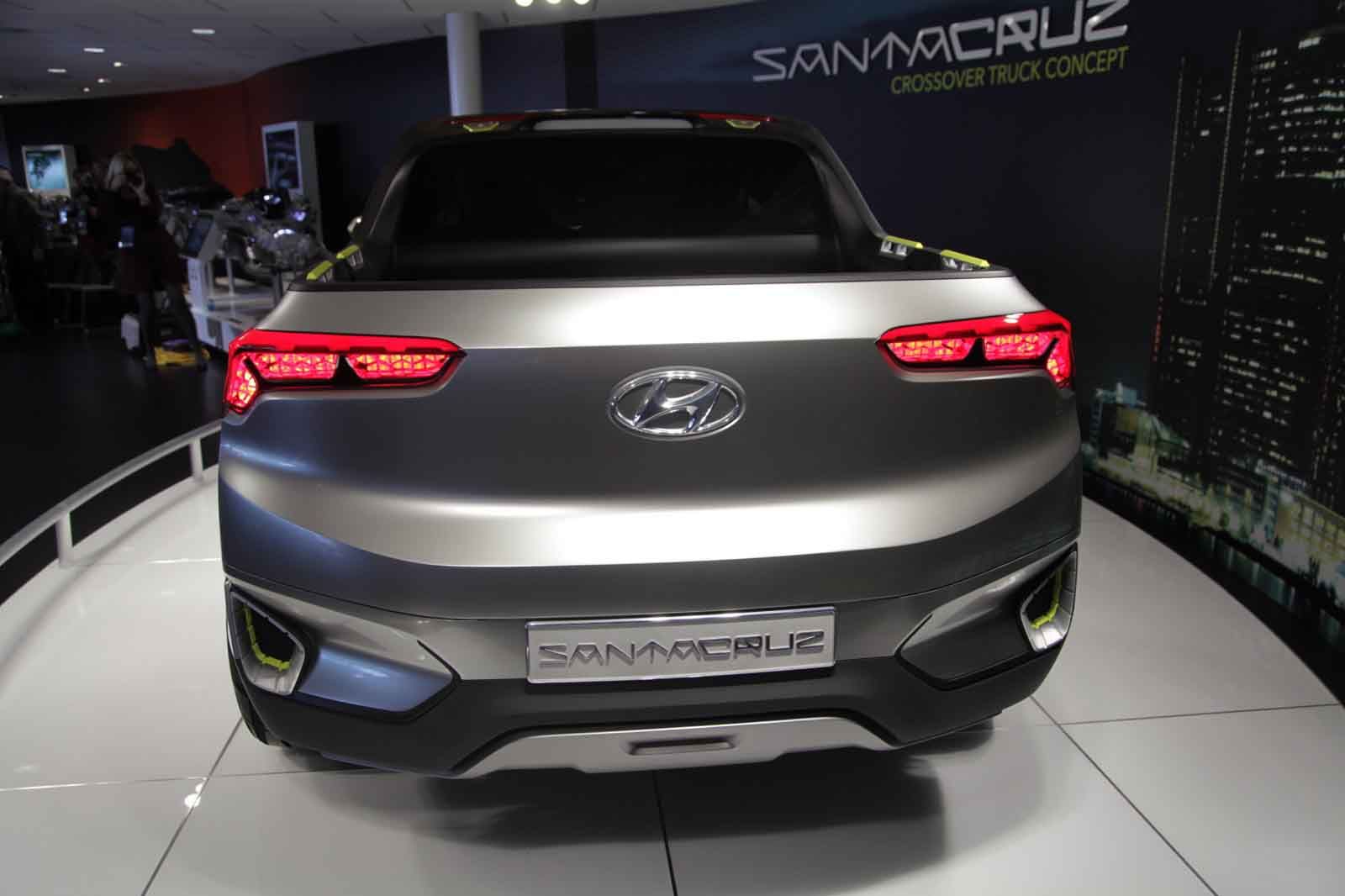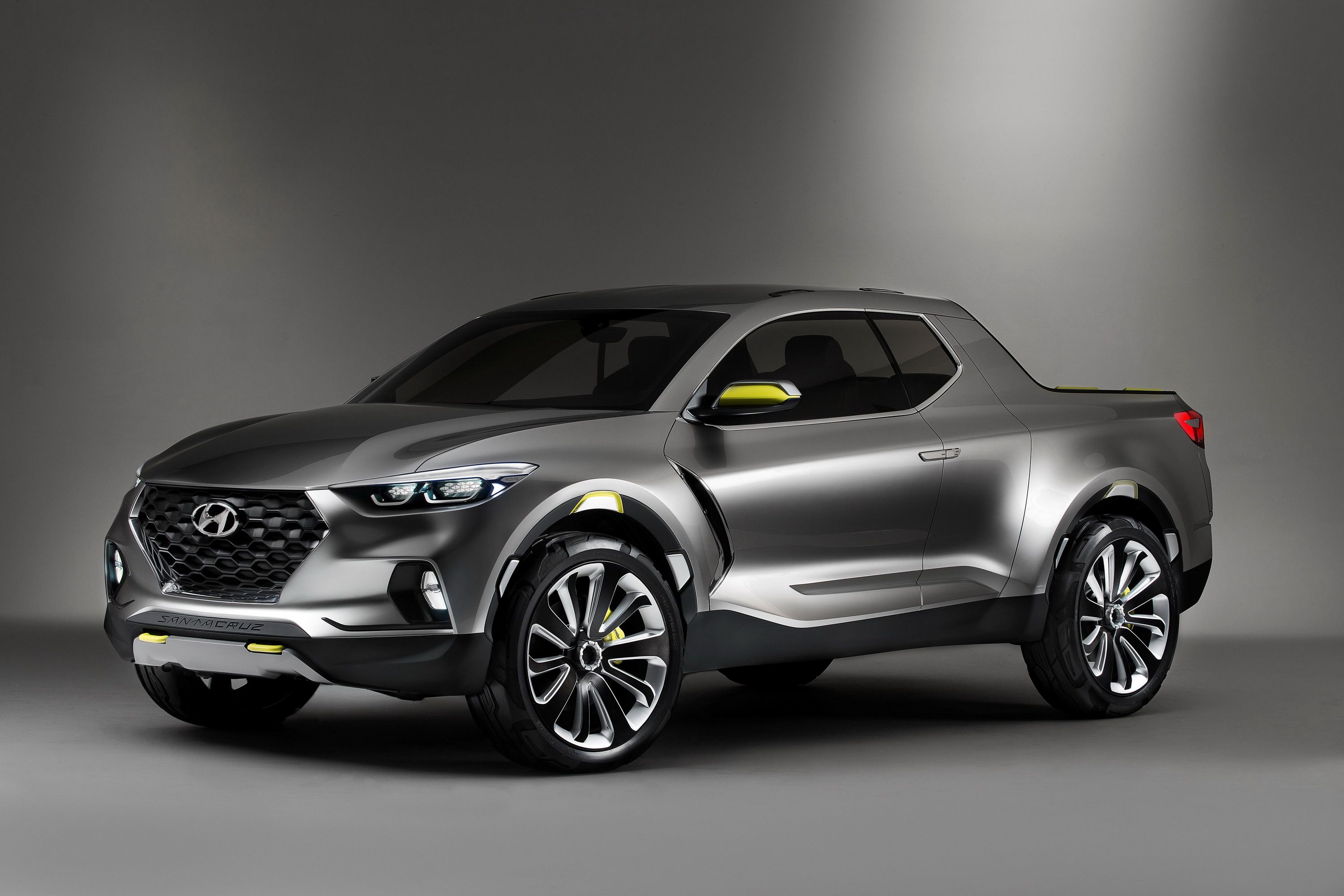Four years after dropping jaws on the floor of the North American International Auto Show, we learn the Hyundai Santa Cruz Concept could finally come to our lives in the next few years. Just don’t expect the production version to look anything like the concept that caused a ruckus in Detroit back in 2015. Time is the biggest culprit behind this shift. It’s been four years since Hyundai unveiled the Santa Cruz, and a lot has changed within Hyundai during that time. The company’s new decision-makers are taking a different approach from the regime that championed the concept’s production back then. It remains to be seen how the different stylistic approach affects the production model’s appeal, but that’s also just one of many questions that Hyundai needs to answer before the production pickup arrives.
The Hyundai Santa Cruz Pickup Should Arrive in 2022
A production version of the Hyundai Santa Cruz is coming. The head of Hyundai’s Global Design Center, SangYup Lee, said as much in a conversation with Motor Trend. According to Lee, the new design of the production version of the Santa Cruz pickup “will be a lot more distinctive” and have “a lot more character.” He also added that the pickup’s new look has already been finalized. That’s the clearest indication we have that a production model is in the works since Hyundai unveiled the Santa Cruz Concept in Detroit back in 2015. That’s a huge victory for everyone who has been waiting for this model since word first came out that the Korean automaker was considering a production version of the concept. We’ll take Lee’s comments to the bank. That’s great, right?
Well, there are still a number of unanswered questions about the production pickup, including its actual design, its identity in the segment, and what exactly Hyundai is aiming for when it finally hits the streets.
This is an interesting development, in large part because the design of the Santa Cruz Concept was one of the biggest reasons why it was received so well. Granted, Hyundai adopted a different design strategy back then, one that relied heavily on creating a streamlined design that cut across its entire lineup. It’s no surprise that the Santa Cruz Concept bared aesthetic similarities with some of Hyundai’s existing models at the time, most notably the Tucson and Santa Fe SUVs. The pickup concept was packaged differently, sure, but the stylistic genes of other Hyundai models were present in the Santa Cruz.
But that was four years ago. Since then, Hyundai has undergone a dramatic shift in philosophy and priorities. Former Hyundai North America CEO Dave Zuchowski was one of the concept’s champions when it first came out, but he’s no longer around to see his baby through after getting fired in 2016 when Hyundai’s car-heavy lineup at the time was struggling to compete with the growing popularity of crossovers and SUVs.
Hyundai has also evolved in the last few years to the point that strategies back then no longer apply to the company’s current goals. That includes the need to give its products the same look to create uniformity across its entire portfolio. SangYup Lee, head of the Hyundai Global Design Center, recently told Motor Trend that the old strategy has been shelved. “No more Russian dolls,” according to Lee. The company’s new goal is to create new models that are striking and different, and the production version of the Santa Cruz would reflect that new design objective.
Still, it’s important to ask, too, if this new design approach has any bearing on the size of the production Santa Cruz. Last year, Hyundai CEO Wonhee Lee indicated plans to develop a “semi-pickup that would create a new segment for pickup trucks in the U.S. market.” Hyundai’s goal for the production Santa Cruz isn’t so much about competing with established models like the Ford Ranger or the Toyota Hilux.
That’s the tricky balancing act that Hyundai needs to achieve for its pickup if it really wants to succeed in a market where there’s an increased demand for bigger pickups.
If this new regime wants the production version of the Hyundai Santa Cruz to succeed in today’s pickup market, it needs to come up with a way to marry different worlds in one package. Imagine a sharply designed pickup that’s light enough to post a fuel efficiency rating of 35 mpg, but is also strong enough to haul around 5,000 pounds? That’s the sweet spot that Hyundai needs to arrive at for the Santa Cruz pickup. Can it do it? We’ll have to see about that, but it sure will be fascinating to see how it unfolds.
Further reading
Read our full review on the 2015 Hyundai Santa Cruz Crossover Truck Concept.

